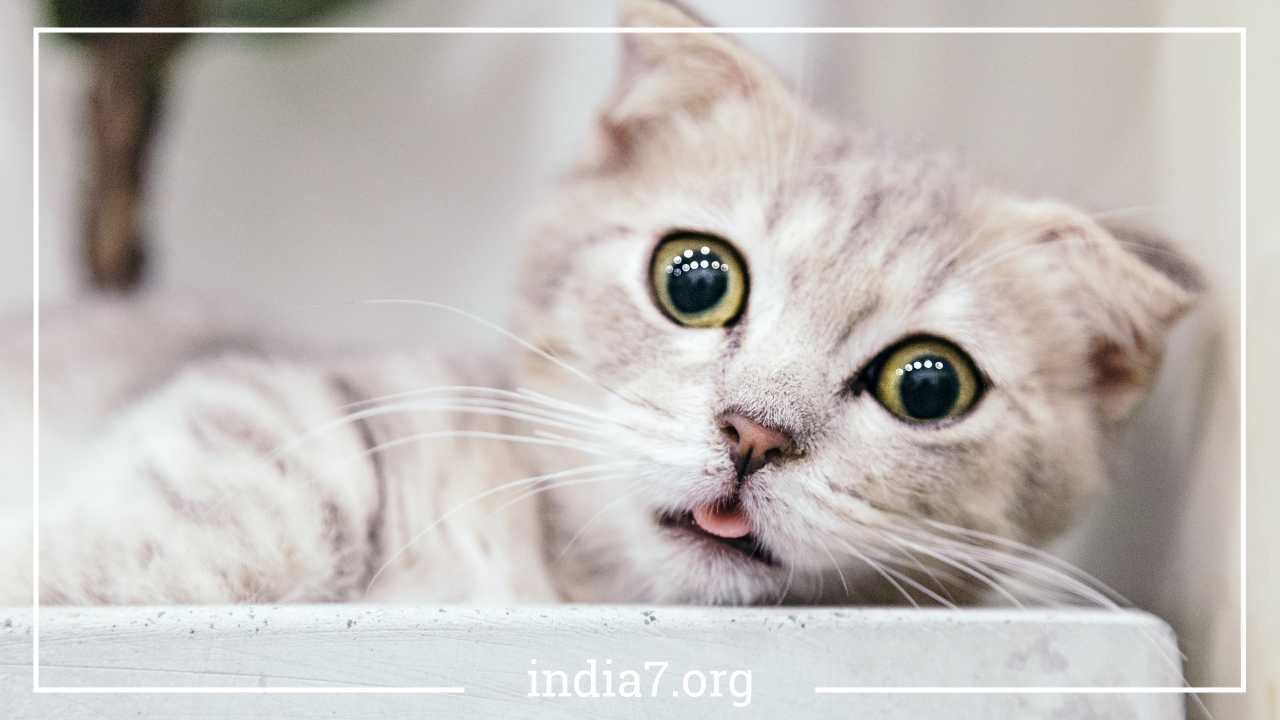Art of Giving Cat a Pill: Effective Techniques and Tips

Giving Cat a Pill
Administering medication to a cat can be a challenging task that many pet owners dread. Cats are notorious for their resistance to having anything forced into their mouths, and they can be remarkably skilled at evading even the most well-intentioned attempts.
However, it’s essential to ensure your cat receives the necessary medication for its health and well-being. In this comprehensive guide, we will explore various techniques and strategies to make giving your cat a pill a less daunting and more successful endeavor.
The Importance of Medicating Your Cat
Before delving into the methods and techniques for administering medication to your feline friend, let’s first emphasize why it’s crucial to follow your veterinarian’s prescribed treatment plan. Medication can play a vital role in managing various health conditions in cats, including:
- Infections: Antibiotics are often prescribed to treat bacterial infections in cats, such as respiratory infections, skin infections, or urinary tract infections.
- Chronic Diseases: Cats with chronic conditions like diabetes, hyperthyroidism, or arthritis may require long-term medication to manage their symptoms and improve their quality of life.
- Pain Management: Pain relievers can help alleviate discomfort in cats recovering from surgery, injury, or chronic pain conditions.
- Preventive Care: Some medications are essential for preventing parasites, such as fleas, ticks, and heartworms, which can pose serious health risks to your cat.
Given the importance of medication in maintaining your cat’s health, it’s essential to find a method that works for both you and your feline companion. Let’s explore various techniques and tips to make the process as smooth as possible.
Crushing and Mixing with Food
One of the most common methods for administering medication to cats is by crushing the pill into a fine powder and mixing it with their food. Here’s how you can do it:
- Crush the Pill: Using a pill crusher or the back of a spoon, crush the pill into a fine powder. Ensure that there are no visible chunks left.
- Choose Wet Cat Food: Opt for a wet cat food that your cat enjoys. The smell and texture of wet food are more appealing to most cats than dry kibble.
- Mix the Medication: Sprinkle the powdered medication over a small portion of the wet food and mix it thoroughly. Make sure the medication is evenly distributed.
- Serve It: Present the medicated wet food to your cat as a treat or during their regular mealtime. Cats may not realize they’re taking medicine when it’s mixed with their favorite food.
- Monitor: Keep an eye on your cat to ensure they eat the entire medicated portion. If there’s any leftover, your cat may miss some of the medication.
While this method is effective for many cats, some can be discerning eaters and may detect the presence of medication, even when it’s mixed with food. If your cat refuses to eat the medicated food, don’t worry; there are alternative approaches to try.
Dealing with Capsule Medication
In some cases, your cat’s medication may come in the form of a capsule. While capsules can be trickier to work with than tablets, they can still be administered successfully with a little patience. Here’s what you can do:
- Open the Capsule: Hold the capsule steady and gently pry it apart. Be cautious not to spill or lose any of the contents.
- Sprinkle on Wet Food: Follow the same steps as mentioned earlier for crushed pills. Sprinkle the contents of the capsule over a small portion of wet cat food and mix it in thoroughly.
- Serve It: Offer the medicated food to your cat and monitor their consumption. As with crushed pills, cats often find wet food more appealing and may not detect the medication.
Remember that some cats may still resist this method, especially if they have a keen sense of taste or smell. If you encounter difficulties, it’s essential to explore other options to ensure your cat receives its medication without undue stress.
Using a Pet Piller
If your cat consistently refuses to take medication mixed with food or if you need a more precise method, a pet piller can be an excellent tool. A pet piller is a device designed to deliver the pill directly into your cat’s throat. Here’s how to use it effectively:
- Select the Right Piller: When obtaining a pet piller, choose one with a longer shaft and a soft, pliable tip. This design ensures a comfortable experience for your cat.
- Prepare the Medication: Have the medication ready and within easy reach.
- Hold Your Cat Securely: Gently but firmly hold your cat to prevent it from escaping during the process. It may help to have someone assist you by holding your cat’s body still.
- Open Your Cat’s Mouth: With your non-dominant hand, gently tilt your cat’s head upward to encourage it to open its mouth. Use your fingers to carefully hold its upper jaw and lower jaw apart.
- Administer the Pill: Position the piller at the back of your cat’s throat, beyond the hump of the tongue. Be gentle to avoid causing distress. Once the piller is in place, press the plunger to release the pill into your cat’s mouth.
- Close the Mouth and Encourage Swallowing: Hold your cat’s mouth closed gently and stroke its throat to encourage swallowing. You may also softly blow on its nose, which can prompt the swallowing reflex.
- Offer a Reward: After successfully administering the medication, offer your cat a small treat or a favorite toy to associate the experience with something positive.
Using a pet piller can be a highly effective method, but it may take some practice to become proficient. Ensure you follow your veterinarian’s instructions and dosage recommendations precisely.
Administering Medication by Hand
If you’re uncomfortable using a pet piller or your cat is resistant to the device, you can attempt to administer the medication by hand. This method requires patience and a gentle touch. Here’s a step-by-step guide:
- Gather Your Supplies: Have the medication ready, along with a towel or blanket to help restrain your cat if necessary.
- Secure Your Cat: Hold your cat gently but firmly. Wrapping it in a towel or blanket can help restrict its movements if it tends to squirm.
- Open Your Cat’s Mouth: Gently tilt your cat’s head upward with your non-dominant hand, just as you would with a pet piller. Use your fingers to hold the upper and lower jaws apart.
- Place the Pill in the Back of the Throat: With your dominant hand, carefully place the pill as far back in your cat’s mouth as possible, beyond the hump of the tongue.
- Close the Mouth: Hold your cat’s mouth closed gently and use your non-dominant hand to keep its head slightly elevated. Stroke its throat to encourage swallowing.
- Offer a Reward: As a reward for cooperating, give your cat a small treat or some affection.
Administering medication by hand can be challenging, especially if your cat is uncooperative or becomes stressed. It’s essential to remain patient and calm throughout the process, and never force the pill into your cat’s throat, as this can cause further resistance.
Flavored Medication Compounds
If all else fails and your cat consistently refuses medication, or if your cat has a strong aversion to the taste of the medication, you can explore the option of flavored medication compounds. These are custom formulations created by compounding pharmacies in collaboration with your veterinarian.
Here’s how this approach works:
- Consult Your Veterinarian: Discuss your cat’s medication resistance with your veterinarian. They can work with a compounding pharmacy to create a flavored version of the medication.
- Choose a Flavor: You and your veterinarian can select a flavor that your cat is likely to find appealing. Common choices include chicken, fish, or beef flavors.
- Administer the Medication: Once you have the flavored medication, follow your veterinarian’s dosage instructions. You can administer it orally using a syringe or by mixing it with a small amount of your cat’s food.
Flavored medication compounds can make the medication experience more palatable for your cat. However, it’s essential to note that this option can be more expensive than traditional medications, and it may take some time to prepare and obtain the flavored formulation. Additionally, not all medications can be compounded, so discuss this option with your veterinarian to determine its suitability for your cat’s specific medication.
Tips for Success
Administering medication to your cat can be a challenging process, but with the right approach and some patience, you can increase your chances of success. Here are some additional tips to help you along the way:
- Stay Calm: Cats can sense your emotions, so it’s essential to remain calm and composed during the medication process. If you’re stressed, your cat is more likely to become anxious as well.
- Establish a Routine: Try to administer the medication at the same time each day and in the same location. Cats thrive on routines, and consistency can help reduce their anxiety.
- Be Gentle: Always handle your cat with gentleness and care. Avoid any sudden movements or forceful actions that could frighten your cat.
- Use Treats and Positive Reinforcement: Reward your cat with treats, praise, or playtime after successful medication administration. Positive reinforcement can help create a more positive association with the process.
- Seek Professional Advice: If you’re struggling to administer medication despite trying various methods, don’t hesitate to consult your veterinarian or a veterinary behaviorist. They can provide additional guidance and solutions tailored to your cat’s specific needs.
Conclusion
Administering medication to your cat may seem daunting, but it’s a crucial aspect of maintaining your feline friend’s health and well-being. By following the techniques and tips outlined in this guide, you can increase your chances of successfully giving your cat a pill. Remember that patience, gentleness, and a positive attitude are your best allies in this endeavor. If you encounter difficulties, don’t hesitate to seek guidance from your veterinarian, who can offer tailored solutions to ensure your cat receives the care it needs.



